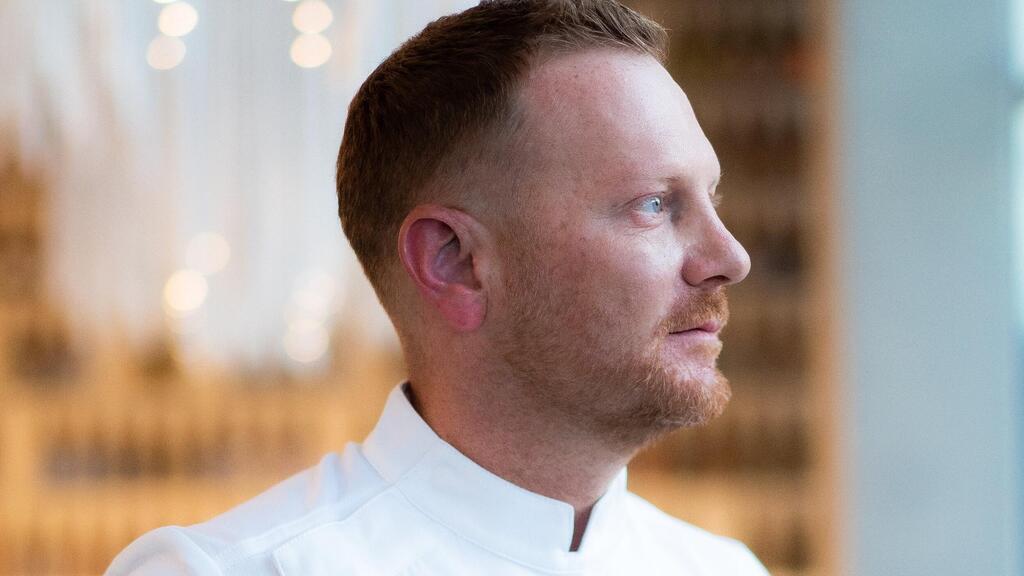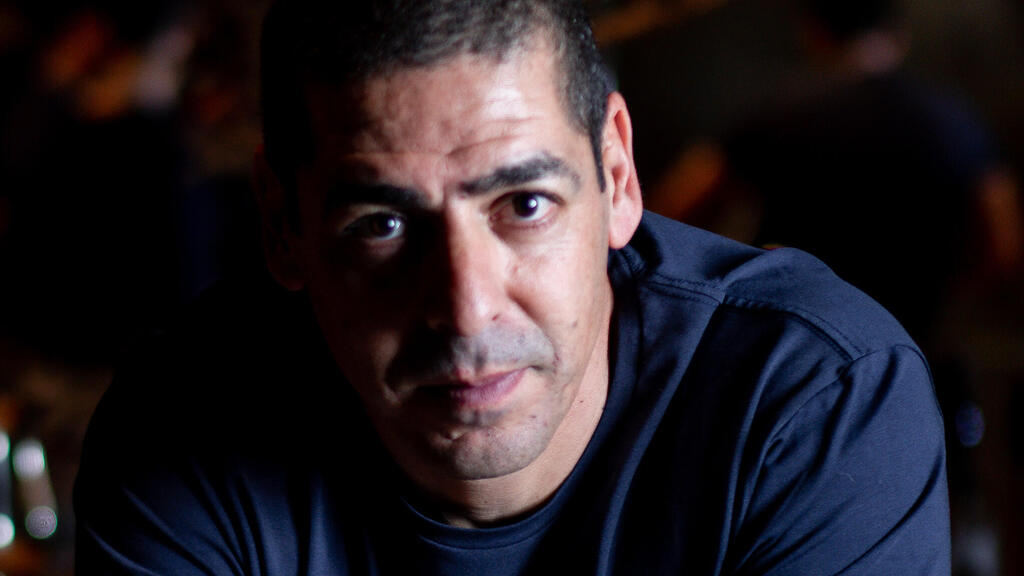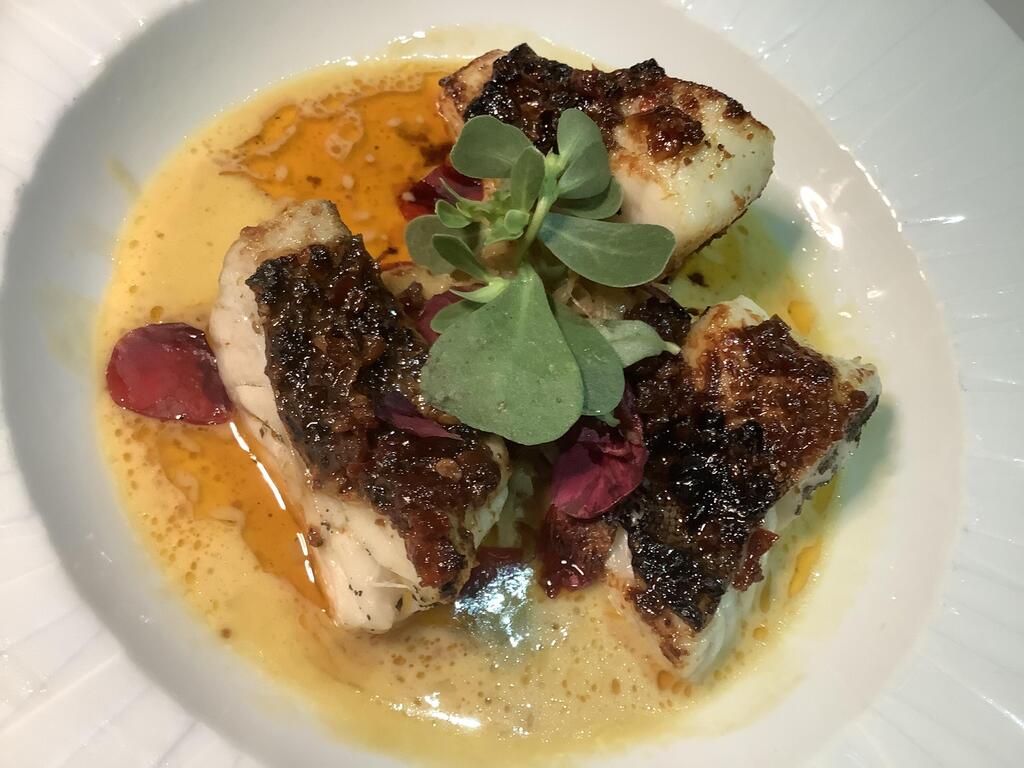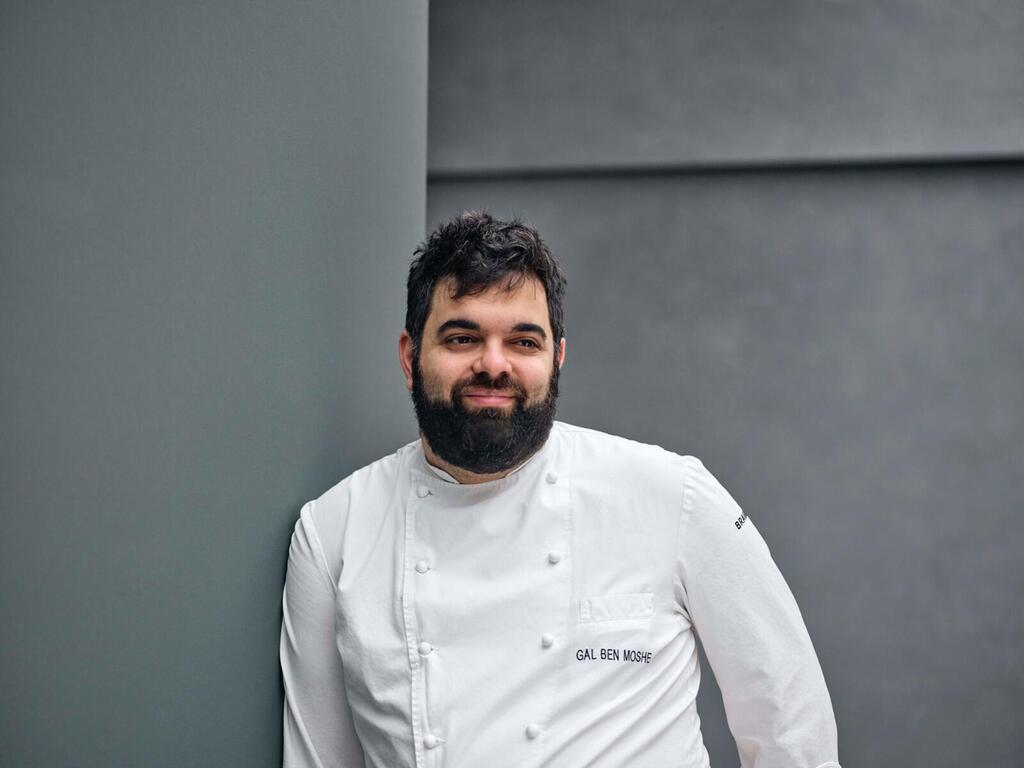Not content to rest on their laurels, Israel’s top chefs have recently opened three elite restaurants in Tel Aviv: Yuval Ben Neriah finally launches “a”, Yossi Shitrit unveils Hiba, and Gal Ben Moshe is lured back from Germany to revitalize Pastel. (The restaurants below are not ranked, but rather listed in alphabetical order.)
Year after year, the pan-Asian fine dining restaurant Taizu (which was reviewed on these pages for the first time back in 2016) has consistently been voted not only the top Asian restaurant in Tel Aviv in public surveys, but the best restaurant in the city, period. Its dedicated following led to several spinoffs: Miazaki, a Japanese fast-food eatery currently operating in Sarona Market, and Ya-Pan, which enjoyed several good years before closing not long before the pandemic.
The secret of the success of the Taizu empire is Chef Yuval Ben Neriah (or YBN, for short), who has for the most part shunned television notoriety.
All of this changed when the chef decided to embark on his most ambitious project yet: to create “The Best Restaurant in Israel” – the immodest title of a documentary that was filmed to follow the conception and birth of “a”, to be located in one of the most prestigious addresses in the country, the Azrieli Sarona Tower. (The name of the restaurant – the first letter of the English alphabet, in lower case – works better when juxtaposed with Hebrew.)
The simple letter “a” is meant to symbolize – and indeed, redefine – simplicity, as interpreted by YBN in his quest to combine basic ingredients into dishes with complex flavors. The restaurant’s culinary vision is explained as “a modern approach to Japanese cuisine, with premium local ingredients selected and explored through different methods…with contrasting elements in every dish.”
The hype created by the televised documentary did achieve its goal: it has been virtually been sold out since opening at the end of 2021, and it is still difficult to obtain reservations for dinner. After months of waiting, we were finally able to gain access for this review – but only for lunch. Fortunately, we were assured that the menu is basically the same, albeit with a few more choices for dinner.
The design of “a” is also rather avant-garde. Half of the seating is at a curved, circular bar, opposite a semi-open kitchen: one may peer into the workings of the chefs through a long, narrow slit of tinted window panes. In the table seating area, acoustics are bit of a problem, as the noise from neighboring conversations tends to reverberate, while an unobtrusive jazz soundtrack plays in the background.
There is an al fresco terrace, but currently it is reserved for diners taking a smoking break. In the future, it will also be used for seating at mealtimes.
Interestingly, even at this exclusive restaurant there is a value lunch menu, where selected first courses are included in the price of certain main courses. The short value lunch menu is in Hebrew only, but the main lunch and dinner menus – which are printed afresh each month – are completely bilingual, so it is easy to cross-reference.
There are six specialty cocktails, although the fully stocked bar can doubtlessly mix any classic. Of course, there is also an extensive international wine list, helpfully classified by color, as well as country. The separate page itemizing wines available by the glass is also very useful, and there is a more than adequate selection.
Still, “a” is perhaps most proud of its unique sake menu, the most extensive
in Israel. Each brand has been personally selected from boutique distilleries across Japan, and one of the restaurant’s missions is to educate Israeli connoisseurs about sake culture.
The main menu comprises five sections: Bites, Firsts, Mains, Dry Aged and Sides. Two of these sections are further subdivided into methods of food preparation: Raw, Fried, Iron and Grill – to which I might add fermented, since there is a sous-chef, Nir Leave, who is the designated specialist in that area.
The Bites section lists five very small appetizers, each one of which disappears all too quickly. One of these tantalizing bites in particular, the Fish Tartare in Brioche, is one that we wished could have gone on longer.
The dishes in the section of first courses represent all of the aforementioned methods of preparation, the only category to do so. This is also the section with the most vegetarian/vegan options, which are very scarce elsewhere.
Noteworthy among the first courses are one seafood and one beef dish: Crab and Black Pepper, and Rump Steak Tataki. What is truly remarkable in each of these is the large number of ingredients and exotic seasonings represented on one plate – the hallmark of and raison d’etre of “a” and YBN’s vision and exactitude.
There are seven main courses, using two cooking methods, yet they manage to encompass a whole range of choices, from meat and fish to vegetarian and seafood. In this category, the Calamari Koji was recommended to us by the restaurant manager, and his advice was spot on.
The section titled Dry Aged is actually a full steak menu, worthy of any premium steakhouse. All seven featured cuts are “hand-picked and [either] dry-aged or koji-aged in-house.” It is apparent that the five sides, which are listed here in a separate menu section, are meant to accompany the steaks.
The separate (also bilingual) final course menu, rather unusually, has three sections: Desserts, Digestifs and Distillate[s]. Six imaginative desserts were listed, but we opted to keep it simple: our sweet finale was the embossed disk of yuzu salt dark chocolate that accompanied the excellent coffee.
“a”. Not kosher. 121 Menachem Begin Rd. Tel Aviv. Tel. (074) 758-8818
The newest restaurant in this exclusive list is HIBA, which opened at the beginning of this year. It is the culmination of years of dreaming and planning by celebrity chef Yossi Shitrit – of television’s Games of Chefs and coffee commercials fame, inter alia – who left behind all his work at the previous empire he built, which at one time included some of the finest restaurants in Tel Aviv: Mashya, Kitchen Market, and the less formal Onza in Jaffa.
“I have always wanted to open a restaurant that would focus on a tasting menu,” Shitrit told Ynetnews. “And I wanted the venue to feel more like eating in the atmosphere of a home.”
The decor is indeed a very welcoming one, with a highly visible, multi-station island kitchen. The design also succeeds in projecting a measure of elegance, with round tables of light wood that are generously sized, even for parties of only two people.
Contributing to the cozy intimacy of HIBA is the limited capacity: only 14 tables, which can seat a maximum of 40 patrons. The mood is further enhanced by a subdued yet pleasant soundtrack. The only drawback is that the acoustics do not absorb all the ambient conversation noise.
The restaurant’s cuisine is Mediterranean, rooted in Israel’s agricultural bounty. At the same time, HIBA strives to weave together Middle Eastern tradition and contemporary modernism.
Other adjectives that the personable Shitrit likes to use to describe his culinary approach are cleanliness, meticulousness, refinement and culinary precision.
An experience at HIBA starts with a personal escort down a narrow foyer to the first tasting: a taco tree. You pick one of the multicolored smoked corn tacos off a wooden branch, and simply pop it in your mouth. This is done standing up, so although you are tempted to linger and keep munching, your table awaits.
There is no cocktail menu, as the focus is on wine, with the bar more for aperitifs, digestifs and spirits meant for sipping; for example, there is a interesting selection of single malts. There is one house cocktail, however: Hendricks gin mixed with sparkling wine, sumac and zaatar – a refreshing concoction with a hint of the spices that will be reprised during the meal.
The restaurant’s sommelier will be happy to guide yout through the extensive international wine list, even offering tastes. There is a whole page of vintages available by the glass, and there is the possibility of ordering a wine pairing option to accompany the tasting courses.
The meal itself starts with four starters served at once, without the usual cutlery. The mise en bouche for two meant to be eaten by hand from one shared plate is oysters fried in beer batter, with shifka pepper. Just pluck this delectable bite from the shell and enjoy.
The sole wooden spoon at your place setting is meant for the caramelized onion foam in a whole onion as the bowl. This cold vegetable bisque, seasoned with cumin and sprinkled with tiny croutons, provides yet another brilliant taste sensation.
The presentation of the catch-of-the-day nigiri is startling, the extremely fresh raw fish emerging from a sea of red dotted with edible flowers. The quartet of appetizers is capped off with spicy pumpkin chirshi peeking out under a leaf of multicolored pasta.
The subsequent courses continue with brioche spread with bone marrow butter on a cream of skordalia sprinkled with pine nuts – quite a medley of flavors. This is followed by a potato course prepared at the table: the tuber, baked with butter and hay made from the peel, is showered by your waiter with grated sheep gouda cheese. Mashed potatoes never had it so good.
Next comes a most unusual wooden bowl, shaped like a sombrero, containing a plump tortellini-style Asian dumpling stuffed with blue crab and kaymak cheese. This plump manti floats on a pond of two-toned tomato cream and jibni foam, which must be sampled with care, lest the sauce overwhelm the delicate crab meat.
The main course, so to speak, was lamb spareribs in a glaze of carrots and chickpea miso. The ribs, while a bit fatty and never our first choice, were perfectly cooked and expertly basted.
Desserts follow the pattern of other courses, just in reverse: one primary final course then three bites of sweet things. Our petits fours with fresh blueberry were outstanding, and washed down by excellent coffee.
On our way out, through the selfsame corridor, we were presented with two souvenirs of our visit: an envelope containing a printed menu on quality paper of what we just ate, plus a small bag of ingredients that we might want to use if we were ever tempted to emulate master chef Shitrit.
(Note: Individual dishes may vary, depending on the freshness of local ingredients in the market that day. The menu will also likely undergo more revisions when the season changes in the fall. The restaurant does not serve lunch, in order to concentrate on dinner.)
HIBA. Not kosher. Midtown, 144 Menachem Begin Rd., Tel Aviv. Tel. (03) 741-4988
This is the only restaurant on our list that is technically not new, but its current iteration certainly is. This by virtue of the brand-new chef that now helms the kitchen: Gal Ben Moshe, who has the distinction of being the only chef in our trio who has earned a Michelin star.
GBM, as he is often known, earned this accolade in his Berlin restaurant Prism. Both were featured on the local television series hosted by Chef Barak Yehezkeli that followed the exploits of Israeli chefs who gained fame abroad.
Of course, GBM has not abandoned his two Berlin restaurants (the second one is Glass); instead, he flies back and forth, spending half his time in Tel Aviv and half in Germany, where his family remains.
On his tough decision to agree to run multiple restaurants in two countries, GBM says, “I knew Pastel was a good restaurant, and the owner convinced me to come back.”
The restaurant on the grounds of the Tel Aviv Museum of Art indeed has a history of which to be proud. Early on, Pastel won a prestigious international design award; and the stunning decor remains in place.
The entreaties of restaurateur Itzik Chengel to secure the services of the overseas chef began when Tavakuli’s successor, Chef Koby Bachar, opted to pursue other projects. GBM was only able to agree after he knew he had sous-chefs on which he could rely in his absence.
“I have chefs I trust in both places,” GBM reveals. “In Israel, it is Ohad Gur Herz.”
In addition to its beautiful interior, Pastel has a tranquil al fresco patio adjoining the museum’s sculpture garden. It is not always easy to choose between the indoor and outdoor seating areas: both areas boast a full bar, and an agreeable jazz soundtrack playing in the background.
The bars mix five specialty cocktails, as well as the classics. Two of the house cocktails – the Rozmarita (margarita with pink grapefruit and rosemary) and the Alek Mojito (with peach and ginger) – are novel twists on the popular originals.
Naturally, there is a dedicated sommelier and an extensive, bilingual, leather-bound international wine list, including one whole page set aside for vintages available by the glass. If the sommelier is not on the premises, the wait staff is both knowledgeable about the wines and generous with bringing tastes. Finally, there are two brands of imported beers on tap.
The bilingual food menu is printed afresh daily, to accommodate any minor tweaks from the day before, as well as reflect the freshness of that particular day’s produce or catch from the sea. It goes without saying that the menu is revised seasonally, for the same reason.
The food menu comprises just two sections, Starters and Main Courses, with the former including also the basket of house sourdough bread, accompanied by an addictive black eggplant cream. Overall, there are limited vegetarian options, and even fewer vegan ones (two pastas). Daily specials not appearing on the dinner menu are recited by the efficient wait staff.
The second page of the menu is devoted to a five-course prix fixe meal, which is yet another temptation. Interestingly, the prix fixe concept is reprised when it comes to Pastel’s weekday value lunch, a very reasonably priced alternative.
Among the starters there is somewhat of an emphasis on raw fish and seafood, as well as lamb – an element of which appears even among the ingredients of two of the seafood dishes. The main courses, meanwhile, offer sufficient variety, encompassing chicken, fish, seafood, lamb and beef.
The first starter listed under the bread is a unique trio of canapés for two. These appetizing hors-d'oeuvres – fish tartlets, crab and labaneh wrapped in seaweed, and a soft cookie filled with eggplant confiture – constitute a marvelous introduction to the cuisine and talent of GBM.
Another excellent – and more substantial – first course is the albacore bruschetta. A slice of Italian toast, spread with crème fraîche, serves as the base of an combination of raw white tuna tartare, pickled onion, potato and quail egg – altogether yielding a terrific interplay of flavors and textures.
The two fish main courses present the diner with a difficult choice: the catch of the day marinated in salt, or the grouper fillet with leek, unripe grapes and verjus. In the end, we discovered that the unusual, acidic yet fruity wine sauce did wonders to enhance the thick yet moist steaks of meaty fish.
There is only one chicken main course, and once again the presence of an unusual fruit sauce tipped the balance in favor of the poultry. The Chicken Lulu’s slices of breast meat paired with rich foie gras in a coulis of fennel and orange is yet another phenomenal dish from the kitchen of GBM’s recreated Pastel.
Finally, there are some intriguing desserts on that separate menu, including a surprising reappearance of eggplant, in yet another sweet variation. Just as unusual, perhaps, is the sweet-and-savory tranche of labaneh cheesecake, sprinkled with za’atar (hyssop), topped with amarena cherry and capped with a sesame tuile.
Since there is no Michelin star restaurant in Israel, Pastel under Gal Ben Moshe is as close as we can get.
(Note: Israeli chefs Assaf Granit and Moshik Roth have also earned Michelin stars for their overseas restaurants.)
Pastel @ The Tel Aviv Museum of Art. Not kosher. 27 Sha’ul HaMelekh Blvd., Tel Aviv. Tel. (03) 644-7441.





